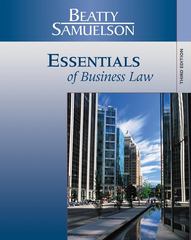Question
Suppose there are two types of used cars: peach and lemons. A peach is worth 3000 to a buyer and 1900 to a seller. A
Suppose there are two types of used cars: peach and lemons. A peach is worth 3000 to a buyer and 1900 to a seller. A lemon, on the other hand, is worth 1000 to a buyer and 500 to the seller. The fraction of used cars that are peaches is P = and the fraction that are lemons is L = . Assume that all parties are risk neutral, and when buyers and sellers bargain, the agreed sales price is always the maximum that buyers are willing to pay.
a.What would be the price for lemons and peaches if there were perfect information about used car quality?
b.What would be the price of a used car if neither buyer nor seller knew whether a particular car was a peach or a lemon?
c.Assume now that buyers cannot tell if a car is a peach or a lemon, but sellers know which type pf car they own. What will be the market price for used car? Explain your answer.
d.Now assume there are as many peaches as lemons (p = ). Continue to assume that buyers cannot tell if a car is a peach or a lemon. What will be the market price for used cars?
e.Continue to assume that (p = ). The Akerlof Auto Institute offers a new service. For price P, it will inspect any used car to determine whether it is a peach or a lemon. The inspection is 100% accurate. What is the maximum price P* that owners of peaches would be willing to pay to have their cars inspected? [Hint: Bear in mind that if one peach owner is willing to pay P*, all peach owners will be willing to pay P*.]
f.The Akerlof Auto Institute decides to charge P*. How much will peaches sell for? How much will lemons sell for?
Step by Step Solution
There are 3 Steps involved in it
Step: 1

Get Instant Access to Expert-Tailored Solutions
See step-by-step solutions with expert insights and AI powered tools for academic success
Step: 2

Step: 3

Ace Your Homework with AI
Get the answers you need in no time with our AI-driven, step-by-step assistance
Get Started


